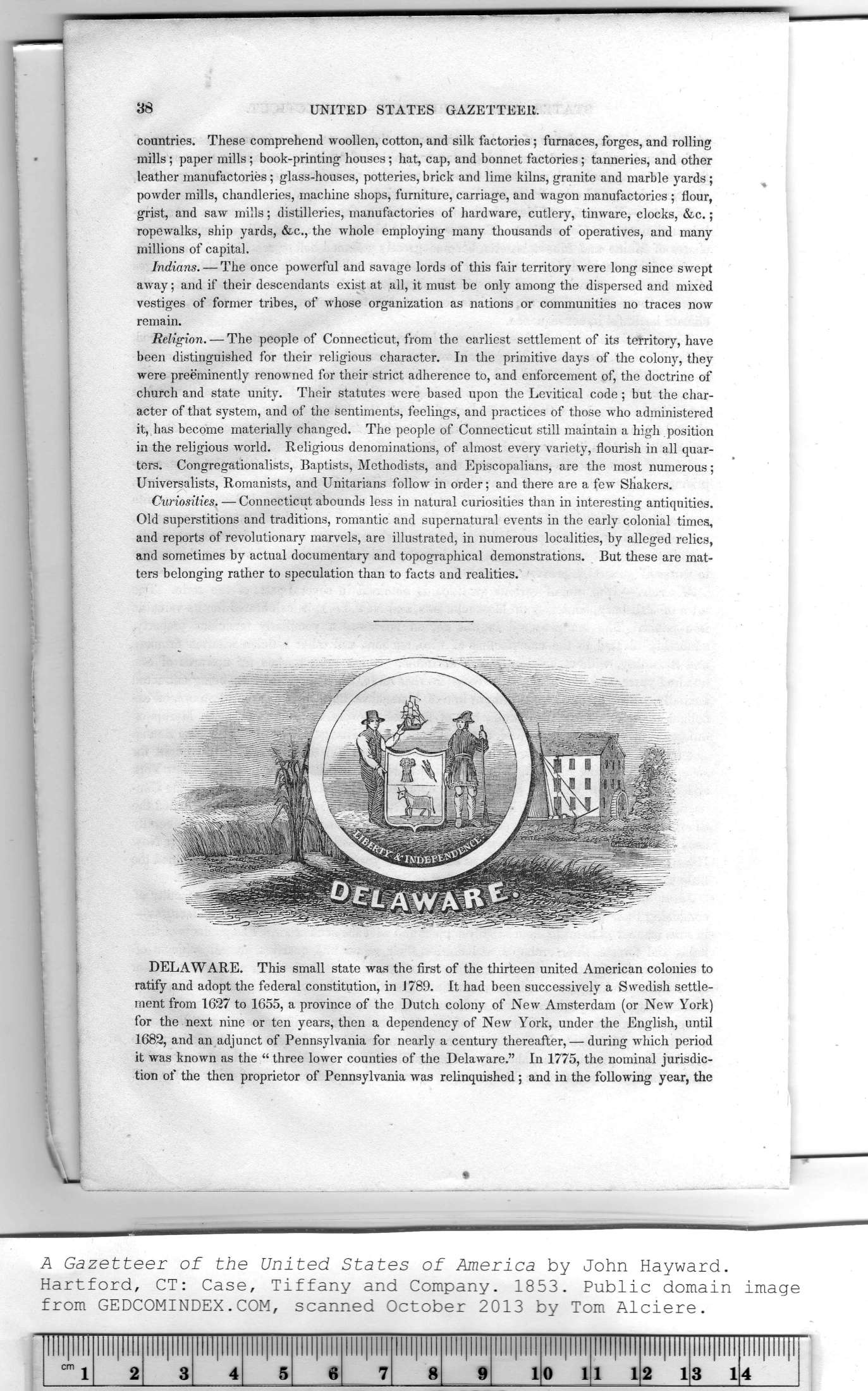|
|
Note: Ctrl and + increases the font size of the text below, Ctrl and - decreases it, and Ctrl and 0 resets it to default size.
as UNITED STATES GAZETTEEH.
countries. These comprehend woollen, cotton, and silk factories; furnaces, forges, and rolling
mills ; paper mills; book-printing houses; hat, cap, and bonnet factories ; tanneries, and other
leather manufactories; glass-houses, potteries, brick and lime kilns, granite and marble yards;
powder mills, chandleries, machine shops, furniture, carriage, and wagon manufactories ; flour,
grist, and saw mills; distilleries, manufactories of hardware, cutlery, tinware, clocks, &c.;
ropewalks, ship yards, &c., the whole employing many thousands of operatives, and many
millions of capital.
Indians. — The once powerful and savage lords of this fair territory were long since swept
away; and if their descendants exist at all, it must be only among the dispersed and mixed
vestiges of former tribes, of whose organization as nations or communities no traces now
remain.
Religion. — The people of Connecticut, from the earliest settlement of its territory, have
been distinguished for their religious character. In the primitive days of the colony, they
were preeminently renowned for their strict adherence to, and enforcement of, the doctrine of
church and state unity. Their statutes were based upon the Levitical code; but the char-
acter of that system, and of the sentiments, feelings, and practices of those who administered
it, has become materially changed. The people of Connecticut still maintain a high position
in the religious world. Religious denominations, of almost every variety, flourish in all quar-
ters. Congregationalists, Baptists, Methodists, and Episcopalians, are the most numerous;
Universalists, Romanists, and Unitarians follow in order; and there are a few Shakers.
Curiosities. — Connecticut abounds less in natural curiosities than in interesting antiquities.
Old superstitions and traditions, romantic and supernatural events in the early colonial times,
and reports of revolutionary marvels, are illustrated, in numerous localities, by alleged relics,
and sometimes by actual documentary and topographical demonstrations. But these are mat-
ters belonging rather to speculation than to facts and realities.
DELAW ARE. This small state was the first of the thirteen united American colonies to
ratify and adopt the federal constitution, in 1789. It had been successively a Swedish settle-
ment from 1627 to 1655, a province of the Dutch colony of New Amsterdam (or New York)
for the next nine or ten years, then a dependency of New York, under the English, until
1682, and an adjunct of Pennsylvania for nearly a century thereafter, — during which period
it was known as the “ three lower counties of the Delaware." In 1775, the nominal jurisdic-
tion of the then proprietor of Pennsylvania was relinquished; and in the following year, the
|
